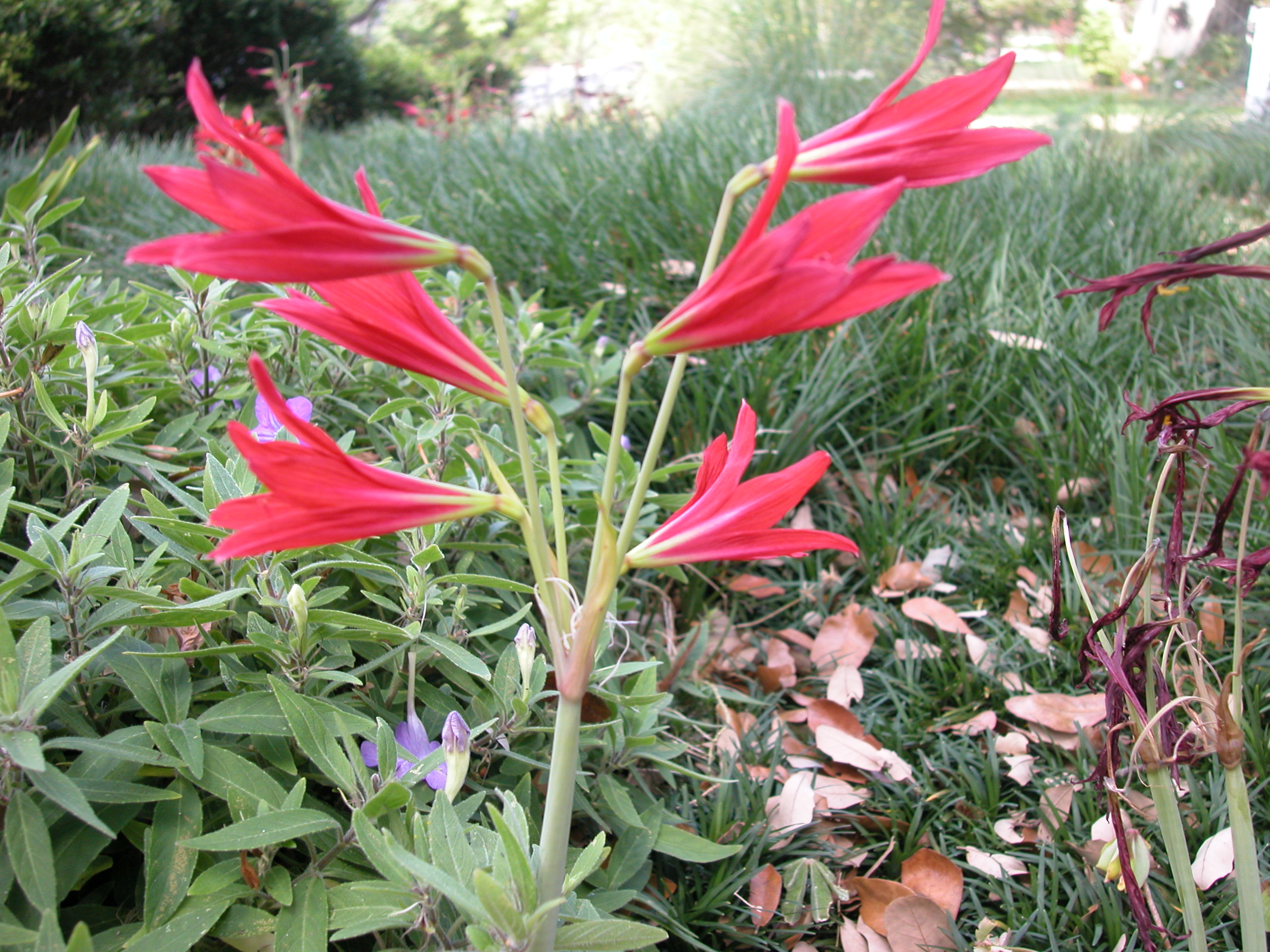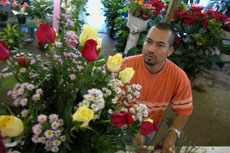Human Flower Project
Gardening & Landscape
Thursday, September 23, 2004
Divided We Survive—Daylilies and More
In the U.S. now’s the time to divide perennials like Siberian iris and daylilies, to improve next spring’s flower display and butter up the neighbors too.
Gardening is social, because everybody got her plants from somebody else. If you’re lucky, you got some of yours for free, from a neighbor both generous and wise, somebody who notices how crowded daylily beds quit flowering. It’s share the wealth or lose it.
Today’s Washington Post offers good tips on dividing and transplanting perennials, with a focus on daylillies. Check it out, and then start digging or begging.
Passalong Plants is a good, breezy book on this subject, with color illustrations of the most common varieties shared across the Southern U.S.
Back in Kentucky, a popular passalong was Celandine Poppy, low-growing with rich yellow flowers. It’s one of the earliest spring bloomers in Louisville and Lexington. Friends back home call it “Peggy Poppy” because we all received our “starts” from Peggy Courtney, a beautiful lady who shared her plants with all of us. Peggy’s no longer with us, but her yellow flowers still bloom every early spring in Louisville yards and across the Bluegrass.
Monday, September 20, 2004
Big City Window-Boxes
Two European architects spruce up homely buildings with vertical gardening.
A huge, plain 10-story apartment building in Paris’s 17th arrondissement has become the city’s tallest planter. Architect Edouard Francois transformed it into a “Flower Tower” with wraparound window-boxes and drip-irrigated bamboo.
Jonathan Glancy reports in today’s Guardian that Francois’s innovation brings shade, life and wind-rustle to an otherwise undistinguished block of the city. The architect “has long observed how, given the chance, Parisians will cultivate the tiniest balcony, nurturing surprising greenery in this tightly packed, densely occupied city. He has formalised this hobby….”
Glancy participated in a similar feat of vertical gardening himself 10 years ago in London, hoping to improve and preserve the Hayward Gallery on London’s South Bank: after a design competition, the building was covered with trailing plants.
Francois is also the force behind Montpellier’s “Sprouting Building”. “Straightforward, well-planned apartments were tucked behind what appeared to be a very unlikely rock face, made of concrete covered in a mesh of steel cages filled with loosely compacted stones….
“There was a rush to live here, for not only does each apartment enjoy a more or less enclosed rustic timber balcony – like a potting shed in the sky – but residents knew that, sooner or later, the wall would bloom, as indeed it has.”
Now that’s Urban Renewal, Babylon-style.
Monday, September 13, 2004
Flowers as Weather-Casters
Arctic wildflowers, like Appalachia’s service tree and the “chilly lily,” predict climate changes, only this time the change may be global.
The chilly lilies are up in Central Texas. Morton King of Georgetown, TX, gave this nickname to the old-fashioned Oxblood Lily (rhodophiala bifida) after noticing that their blooms coincided with the first cold spell at summer’s end.

“They’ve become famous,” says King, 91, “because they come up a week or two before the first cold front in the fall. They are alleged to be an accurate predictor of when things are going to cool off and youre going to have a fall rain.”
Each year when they bloom, King writes to the Georgetown Sun, telling the community that autumn is, blessedly, on the way. A Ph.D. sociologist, King is careful about causality: “Now, it’s the coming cold weather that makes them come up, I suspect, rather than vice versa,” he laughs.
Salon.com reported last week about another flower harbinger that has Alaskan botanists anything but happy. According to Rebecca Clarren’s 9/11/04 report “Baked Alaska,” strangely mild September temperatures have set off a second bloom cycle this year in the eriophorum plant. Not good. You don’t have to be a University of Alaska botanist to figure out that flower seeds don ‘t winter over too well in the Arctic. Clarren explains, “Flowers only make one set of buds each year, so if they spend next year’s buds now, they’ll be out of luck next spring. If the warming trend continues, the flowers may go extinct.”
Researchers near Toolik Lake believe that the eriophorum plant’s confusion is yet another sign of global warming, which already has melted several Alaskan shoreline communities off the map.
Are there flower weather-predictors in your area? In Eastern Kentucky, the service plant (pronounced “sarvice” there) was once the harbinger of spring. I’ve heard that once it bloomed, people knew the ground had thawed enough for burials.
The twice-blooming eriophorum may portend a very different kind of funeral.

